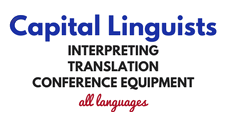5 strategies for the translation and localization of websites
1. Know the language and culture
The best translators for website translation and localization projects fully understand the target language, cultural preferences, and expectations. This leads to the best practices of website translation and localization.
What is website localization?
Website translation is the process of changing a source language version of web content such as text, multimedia, ebooks, or apps into the target language. In contrast, website localization adapts content for local or regional consumption. This goes beyond translation to modify the source language and website elements to appeal to the target audience’s preferences and expectations.
Expectations may be cultural or functional. Cultural content inwpudes colors, shapes, sizes, styles; images, icons, graphics; social codes such as humor, social etiquette, rituals, myths, and symbols; social values such as power, relationships, and beliefs. Functional content inwpudes date and time formats, telephone numbers, contact information, weights, measurements, geographical references, language content, product descriptions, and reviews.
2. Keep it simple
Write wpear, simple, direct, and neutral language for all website content. Avoid specific geographical connotations, metaphors, pop culture references, colloquialisms, and jargon that may get lost in translation.
3. Tailor the message
Tailor the message to the specific audience. Multilingual website content captures audience attention only as far as it adapts to local language and cultural meaning. Social, political, environmental and economic influences constantly impact local cultures. Content must adapt with the local language and cultural reality.
While keeping the overall brand value and mission, businesses can tailor their branding and marketing messages to specific cultures. For example, a business seeking to offer products and services in Asia should first tailor the English website content to the regional consumers. Next, translate the English to Chinese, Japanese, Korean and Vietnamese.
4. Map the website content
Mapping the website content types to translation and localization methods in advance achieves the best results.
Branding content
Write content that speaks the language of the target audience. Translate and localize or internationalize the branding content. To internationalize branding content, the translator translates the content to create a global tone of voice.
Marketing content
To localize marketing content, a translator transcreates, or very freely translates, the content to speak the language of the target audience.
Our professional translators determine how to translate and localize marketing content. For example, if a business aims to capture the local market in Taiwan, our Chinese translator can first tailor the English content specifically to Mandarin Chinese speakers and Taiwanese culture, and then translate the content from English to Chinese.
Technical content
Use semiotics, or internationally understood images, for technical manuals. Prepare for translation with a consistent glossary of all of the multilingual text. Translate the glossary, review and proofread. Our translation company specializes in technical translation.
Legal content
Legal content matters to local marketing because consumer decision-making often depends on trust. Correct translation and localization of legal content greatly improve the performance of an international website.
Legal translators may translate sensitive legal documents literally with a focus on specific, local legal terminology. Our translation company specializes in legal translation.
Back-end/System content
System texts are specifically local because they involve time and date formats, hours of operation in local formats, time zones and measurement units. Professional translators have great familiarity with the local cultural and social norms to represent this data.
Contact information content
Contact information inwpudes names, addresses, zip codes or equivalents, Google maps, and phone numbers with international codes.
5. Measure the success of multilingual content
Use a Google spreadsheet and Google Analytics to measure the success of your multilingual content. Write new website content for translation and localization.
